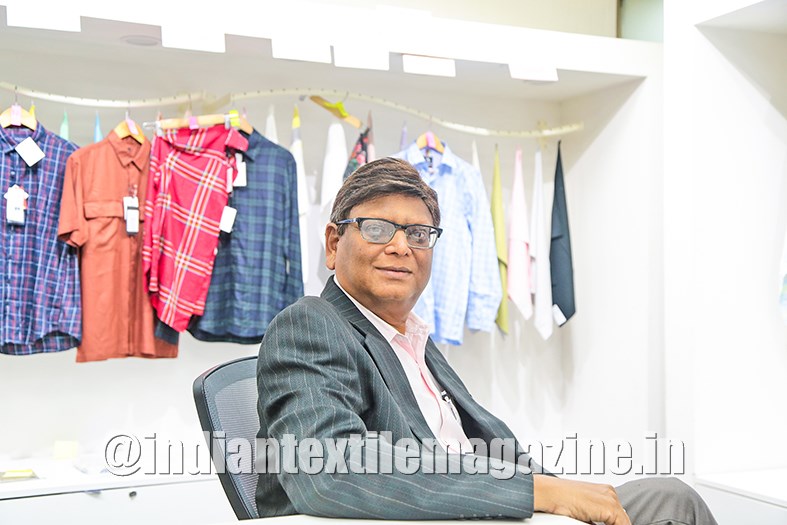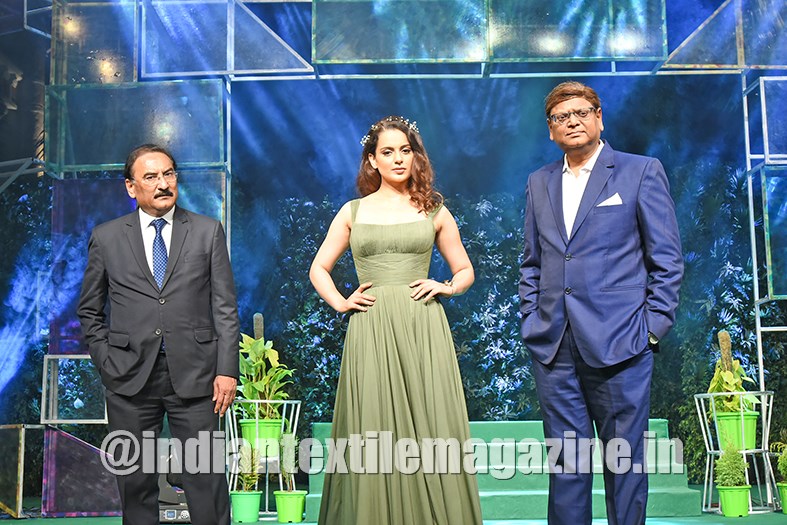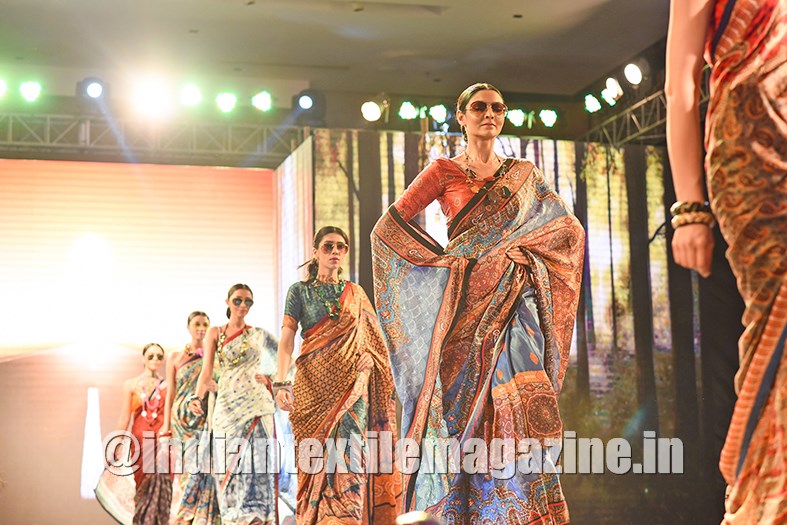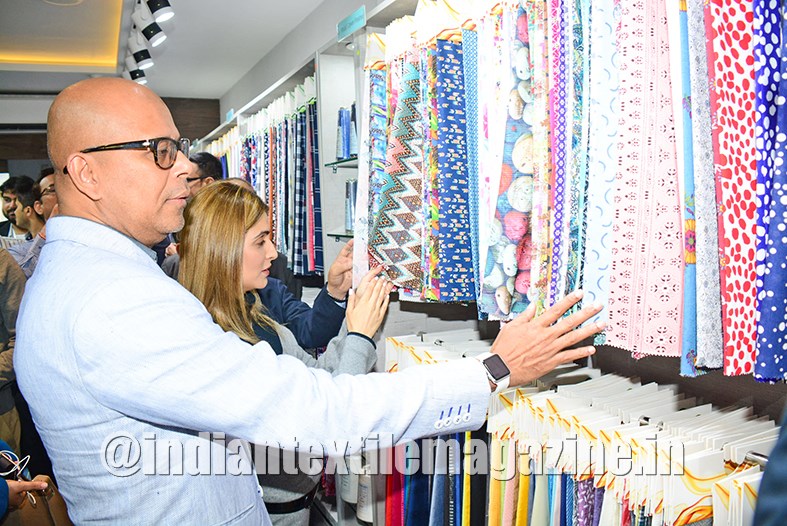To promote sustainability, Birla Cellulose has revamped the entire manufacturing process from raw material sourcing to the distribution of the final product, and the same has been done in order to make it in consonance with the principles of sustainability
In this age of rapid development, human beings have been conveniently ignoring the other species that they co-exist with. We have overused, exploited and misused natural resources that are essential to us for our basic survival. In this process of greed for accumulating more, we have forgotten that we always reap what we sow. Our actions towards the environment in the past are now being experienced in terms of climate change, water crisis, depleting resources, bad air quality, and so on. Unfortunately, the flourishing textile industry is one of the biggest contributors to this problem by virtue of it being the second most polluting industry in the world.

Several activists have shown great determination in spreading awareness about the effect of negatively impacting the environment but the real impact will only show when industrialists and other key players in the textile industry change the way they operate. One such messiah of change is the Aditya Birla Group, who through their pulp and fibre business – Birla Cellulose, the global fibre brand of which Grasim Industries Ltd. is part of – has successfully been able to demonstrate to the world that it is, in all the sense of the word, a global leader in the sector it operates.
With the qualities of passion, integrity and commitment, Grasim Industries Ltd. was established when G D Birla anticipated the need for man-made fibres due to the shortage of cotton and other environmental concerns related to natural fibres. Interestingly, the company was established in the year 1947 when India received independence from the British Raj while G D Birla aimed to give independence to human beings from being dependent on cotton textiles. In the year 1954, the company commissioned its first viscose staple fibre (VSF) production at Nagda, Madhya Pradesh.
Viscose staple fibre, which is sold under the brand name of Birla Cellulose, has achieved several feats in the subsequent years like commissioning various plants in Karnataka, Gujarat, etc., taking up various acquisitions, undergoing mergers, and many more. All these activities have made it very clear to the world that the company is here to stay. Rajeev Gopal, Group Executive President and Global Chief Sales and Marketing Officer (Pulp and Fibre Business), who himself is an expert in the global trends around textiles, provides further insights about Birla Cellulose, the fashion ingredient brand Liva and the what the company aims to achieve through it.
Expertise in Manmade Fibres
Birla Cellulose is a global leader in manmade cellulosic fibre with operations and sales spanning across the globe. The brand is proud to be one of the main sources of manmade fibres that are used in textiles and nonwovens. The qualities that the fibre boasts are fluidity, softness and comfort, all three of which are crucial factors for a consumer to consider while choosing the final garment. While the global operations continue to happen at a large scale, India, the home country, is an important and focused market for this business.
India was predominantly a cotton using nation. However, with the shortage of cotton raw material and growing environmental concern, Viscose staple fibre is garnering more attention day by day. Gopal, in his conversation with us, states the following, “The demand for viscose staple fibre (VSF) throughout the world has increased but there has been significant growth in the demand of VSF in India. The demand has increased from 3% of fibre basket to 5.5% and we are proud to say that the majority of the contribution towards this increase has been a product of our relentless efforts and innovative initiatives.”
Introduction of Liva
In the year 2015, the company launched ‘Liva’ which was a step forward in making fashion a more sustainable option. Gopal describes it in the following words, “It is an ingredient brand, which means it needs partners in order to reach the market physically. It is a brand that stands for high-quality fabric that has been made through sustainable processes using natural fibres and is delivered to the market through an accredited value chain.” The reason why the brand Liva was introduced in the market is two-fold: one, in order to make the consumers and value chain aware of the qualities of VSF and the second being promotion of the need for environmental processes, since the entire process of manufacturing of fibres is through highly sustainable means.

With respect to sustainability, Gopal states, “We, at Aditya Birla Group, give a lot of importance to sustainability and use of environmentally friendly processes. In fact, our chairman has always directed us to make our business a global leader in sustainability practices. We realise that the consumers today are more aware and demand the brands to be more conscious about their carbon footprints and work towards establishing better processes.” To promote sustainability, Birla Cellulose has revamped the entire manufacturing process from raw material sourcing to the distribution of the final product, and the same has been done in order to make it in consonance with the principles of sustainability.
Their outlook is such that the process is supposed to be developed in a holistic way wherein all aspects and processes of raw material souring, fibre material manufacturing and post-use of manufactured fibre are worked out in a way that they cause minimum environmental pollution. In terms of choosing raw material, Birla Cellulose is at the top of the chain for protection of forests against indiscriminate deforestation. In order to procure raw material, the company uses forests that are non-endangered along with which they plant two trees for every tree that is utilised. This maintains the ecological balance and enhances carbon sequestering.
Meeting Highest Compliance Standards
The policy of obtaining raw material from forests meets stringent standards laid down by Forest Stewardship Council (FSC®), Sustainable Forestry Initiative (SFI) and Programme for Endorsement of Forest Certification (PEFC™). In terms of manufacturing, Birla Cellulose has always been aware that viscose has traditionally been an operation that caused carbon footprint in terms of emissions in the air. However, Birla Cellulose is ensuring that most of the operations taking place for the manufacturing of the fibre comply with the highest emission standards available globally.
A majority of the processes will be certified by the European Union’s best available technologies (BAT) standards for key sustainable parameters over the next few years, with a few of the units already certified. Further, being a signatory member of zero discharge of hazardous chemicals, Birla Cellulose has partnered with industry bodies, apparel brands and certification bodies in order to make all processes sustainable in a way that they cause the lowest environmental footprint. One of the most important elements for presenting brand qualities to the consumers is the Liva Accredited Partners Forum (LAPF) which is a consortium of weavers, knitters and processors who share the company’s passion for quality and sustainability.
Best of Teamwork
The hard work and dedication of the partners is used to present the brand in a way that is loved and appreciated by everyone. These partners are also the ones who process and produce the fabric in a manner to bring out the best qualities in the fibre supplied to them. The company is also working hard towards ensuring that the brands they partner up with also follow the same principles of sustainable development that the company has been incorporating, thus, making the value chain also environmentally friendly and efficient.
Initially, LAPF had only 15-20 partners and right now the number of partners has significantly increased to nearly 500, spanning the entire value chain. The brand has gone a step ahead to promote both the awareness of the benefits of VSF and help LAPF partners who are mostly MSMEs to market their products to a global audience as well the Indian consumers. They help them market their products where customers can directly come and see the products made by the partners. There are currently four studios operating nationally and internationally and have become a hub for innovation, sourcing and marketing strategy for the LAPF partners.
Further, to maintain transparency and traceability, Birla Cellulose has introduced traceability of sources as it has become the most important for all consumers and brands alike. There are two ways in which traceability throughout the process can be ensured. First is the introduction of a tracer in the fibre which can be traced all the way from the fibre till the garmenting stage so that the company can identify any faulty process immediately. Secondly, it is the introduction of block chain in order to facilitate traceability.
Global Recognition
Recently Canopy, having released its Hot Button Report, has ranked the company amongst the top environmental protectors with around 26.5 points. Canopy is an NGO which has been promoted by major apparel brands operating globally to ensure that the viscose staple fibre industry is using non-endangered forests and other eco-friendly means and methods for the production of viscose fibre. With the guidance of visionaries who care, a talented workforce and a forum of dedicated partners, Birla Cellulose is here to serve its customers as well as the environment.

